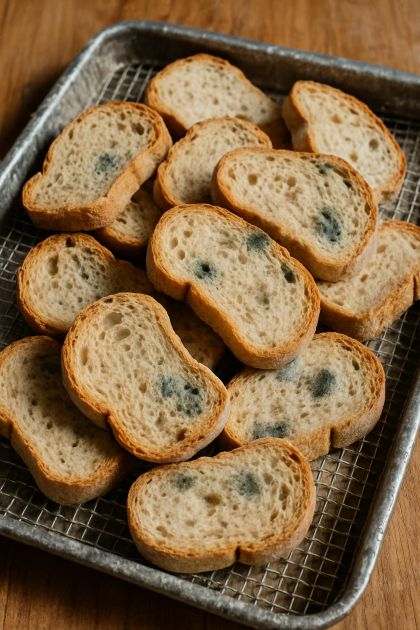
Stale Bread: Waste or Worth Saving?
We’ve all opened the pantry only to find bread that’s gone stale. It’s easy to feel frustrated seeing food lose its freshness. Before tossing it, consider advice from well-meaning family members who insist it’s wasteful to waste it. Stale bread is a common dilemma in many households. This article explores what stale bread is, whether it’s safe to eat, and ways to revive it while reducing food waste.
What Makes Bread Stale?
Bread goes stale when it loses moisture and hardens. This process, called retrogradation, occurs as starch molecules crystallize and push out water. Improper storage can speed it up. Note that staleness is not the same as mold. Dry bread is usually safe, even if its texture isn’t appealing.
Is Stale Bread Safe to Eat?
Yes, as long as no mold is present. Mold appears as green, black, or white fuzzy spots and can produce harmful mycotoxins. Dry bread is safe and can be made more enjoyable by toasting it or using it in recipes like croutons or bread pudding.
The Environmental Cost of Tossing Bread
Food waste is a global problem. About 1.3 billion tons of food are wasted annually, with bread among the top offenders. Wasting food squanders resources like water and energy and adds greenhouse gases when it decomposes. Repurposing stale bread helps reduce this impact and supports sustainability.
Ways to Revive Stale Bread
You can restore stale bread with a few simple tricks:
-
Oven Method: Sprinkle bread with water and bake at 350°F (175°C) for 10 minutes.
-
Moist Recipes: Use it in French toast, stuffing, or bread pudding to mask dryness.
Viral Hacks for Stale Bread
Social media offers creative ideas:
-
Homemade Breadcrumbs: Grind stale bread and store in an airtight container for future use.
-
Croutons: Cube the bread, toss with oil and seasonings, and bake until crispy. Perfect for salads and soups.
Nutritional Value Remains
Stale bread keeps most of its nutrients. Carbs, fiber, and vitamins remain intact. Enriched bread may lose some added nutrients over time. The main change is texture, which can affect enjoyment rather than nutrition.
How to Store Bread Properly
Proper storage slows staleness:
-
Keep bread in a cool, dry place, preferably in a bread box or paper bag.
-
Avoid the fridge; it speeds up staleness.
-
Freeze excess bread in foil or plastic wrap, and thaw at room temperature or toast directly.
When Bread Should Be Discarded
Discard bread if:
-
Mold appears, or it smells off.
-
It’s extremely hard or unpleasant to eat.
Prioritize safety and quality over saving every slice.
Cultural Views on Stale Bread
Some cultures embrace using stale bread creatively. For example:
-
Italy: Panzanella salad uses leftover bread.
-
France: Pain perdu (French toast) turns stale bread into a treat.
Other cultures prioritize freshness, discarding food past its prime. Learning from these traditions can inspire sustainable habits.
Chefs’ Take on Stale Bread
Many chefs see stale bread as a resource, not waste. Culinary innovators like Massimo Bottura create dishes specifically to minimize food waste. Stale bread can be versatile, from croutons to puddings, proving sustainability can also be delicious.
Making the Choice
When deciding to use or discard stale bread, weigh:
-
Safety: No mold or spoilage.
-
Taste: Can it be repurposed in a tasty way?
-
Impact: Will saving it help reduce waste?
With these factors in mind, you can make a choice that balances personal preference and sustainability.



